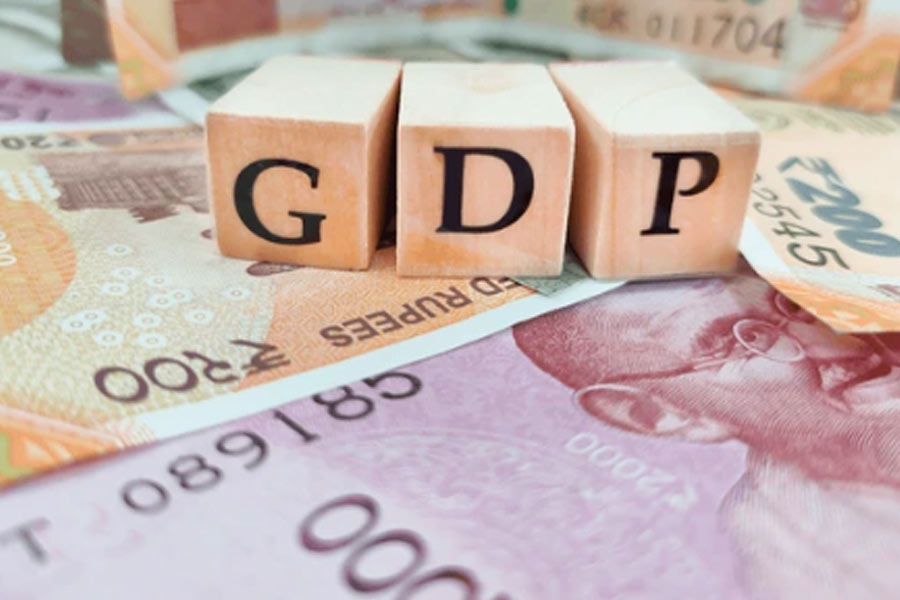Moody’s Investors Service says that India’s economy will grow 7.2 per cent in calendar year 2024, driven by robust domestic demand and strong manufacturing
activity.
However, the rating agency cautioned that persistent inflationary pressures could temper the growth outlook.
“India is in a sweet spot with a mix of solid growth and moderating inflation,” Moody’s said in a report released on Friday.
“High-frequency indicators — including expanding manufacturing and services PMIs, robust credit growth and consumer optimism — signal steady economic momentum in Q3,” Moody’s Ratings said.
“Despite the near-term uptick, inflation should moderate toward the RBI’s target in the coming months as food prices ease amid higher sowing and adequate food grain buffer stocks,” the report said.
India’s real GDP expanded 6.7 per cent year-over-year in the second quarter of 2024, driven by a revival in household consumption, robust investment and strong manufacturing activity. There are indications of a steady economic momentum in the July-September quarter as well.
“... from a macroeconomic perspective, the Indian economy is in a sweet spot, with the mix of solid growth and moderating inflation. We forecast 7.2 per cent growth for calendar year 2024, followed by 6.6 per cent in 2025 and 6.5 per cent in 2026,” Moody’s said.
Sound economic fundamentals, including healthy corporate and bank balance sheets, a stronger external position, and ample foreign exchange reserves also bode well for the growth outlook, it added.
The agency highlighted the revival in household consumption, fuelled by increased spending during the festive season and a sustained pickup in rural demand. Additionally, rising capacity utilization, upbeat business sentiment, and government’s continued focus on infrastructure spending are expected to support private investment.
However, the agency cautioned that sporadic food price pressures could introduce volatility into the disinflation trajectory. Retail inflation surged to a 14-month high of 6.21 per cent, breaching the RBI’s upper tolerance limit, on a sharp jump in vegetable prices.
“Potential risks to inflation from heightened geopolitical tensions and extreme weather events underscore the RBI’s cautious approach to policy easing,” Moody’s said.
The agency said sporadic food price pressures continue to inject volatility in the disinflation trajectory.
“Although the central bank shifted its monetary policy stance to neutral while keeping the repo rate steady at 6.5 per cent in October, it will likely retain a relatively tight monetary policy setting into next year, given the fairly healthy growth dynamics and inflation risks,” Moody’s said.
The RBI’s interest rate-setting monetary policy committee is scheduled to meet next month. With inflation ruling high, it is unlikely that the RBI will cut benchmark interest rates.
The global economy, Moody’s said, has shown remarkable resilience in bouncing back from supply chain disruptions during the pandemic, an energy and food crisis after the Russia-Ukraine war began, high inflation and consequent monetary policy tightening.
“Most G-20 economies will experience steady growth and continue to benefit from policy easing and supportive commodity prices. However, post-election changes in US domestic and international policies could potentially accelerate global economic fragmentation, complicating ongoing stabilization,” said Madhavi Bokil, Senior Vice President at Moody’s Ratings and author of the report.
Moody’s said trade tensions and geopolitical stresses, particularly between the US and China, are primary risks to the global macroeconomic outlook.
Potential long-term geo-economic fragmentation could also complicate global trade and financial connectedness.
Increasing trade protectionism, together with a push in several large economies to strengthen their domestic industries, make external demand a less reliable source of growth, Moody’s said, adding that economies with robust domestic drivers of growth will experience greater resilience and stability.
“Trade tensions and geopolitical stresses, particularly between the US and China, are primary risks to the global macroeconomic outlook,” Moody’s said.











